OK, I have to declare a vested interest right up front.
I love Stockholm. I live here and still find it one of my favourite cities in the whole world. Ever since visiting for the first time I’ve been taken hostage by its many charms, and quirks. It’s a very wealthy city but one of the biggest things I appreciate are its values. There’s a very easy feel about Stockholm, very easy to live in and I love the fact it’s so open and inclusive to everyone.
In UP we don’t have offices and we don’t have employees. We do however have people – lots of them, in fact over 200 people globally as of today. Some might describe themselves as digital nomads, but the vast majority would call themselves e-ployees. We’ll come on to the distinction between these two terms later.
So instead of traditional offices we run what we call Creative Spaces. These are shared co-working facilities where our members (more on that in a moment) can go and work if they need to meet a client, or other UP colleagues or use a conference room. Our creative space in Stockholm is in a district called Östermalm. This shared working facility gives our members a base, and many of us within UP appreciate this, and also like the fact that we don’t have to go there to work – but can when we want or need to. Östermalm itself is a very ritzy area with a fantastic choice of cafes, restaurants, markets, shops and health clubs. It’s a little world in itself, and a very welcoming one for digital nomads.
Stockholm: a city for everyone
As I said, Stockholm is a rather well off city and Östermalm is the epitome of this. It’s one of the few places in the world where people not only park illegally, without regard to the consequences, but also it is their Range Rovers or Mercedes that they triple park. I saw one woman recently abandon her Porsche SUV in the middle of the road, hop out with a hand bag sized pooch under her arm, and casually trot into a cafe; simply abandoning her car with the hazard lights on, to warn people she was taking lunch. The fines are hefty, but she didn’t seem too concerned.
We established UP THERE, EVERYWHERE® in 2011, and Stockholm was the perfect place to start it. We’re a global cloud based branding, marketing and digital agency, and Sweden is extremely progressive when it comes to employment trends, so Stockholm was a natural fit.
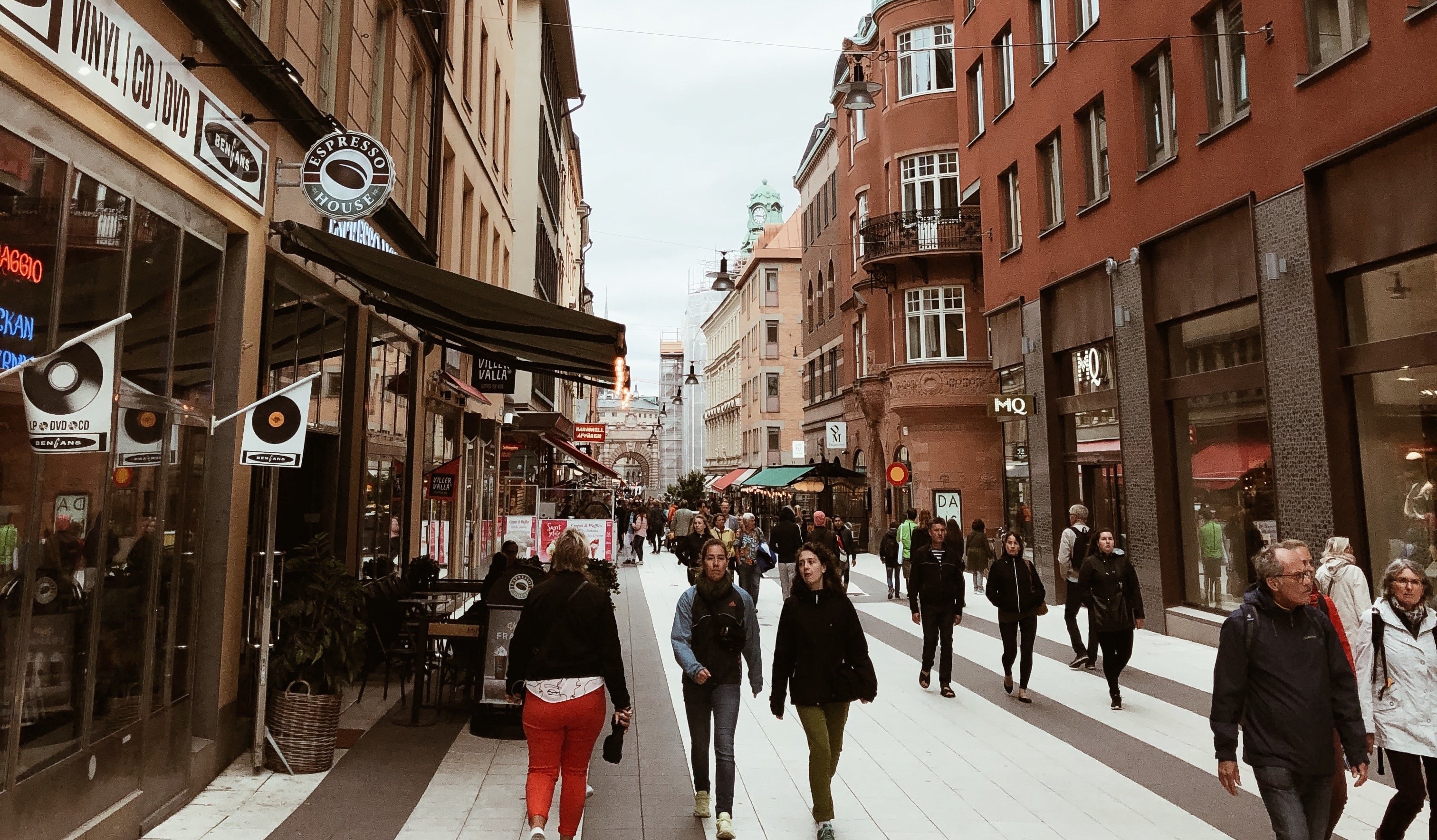
Digital nomad or e-ployee?
We encourage our members to work wherever they work best. If that doesn’t appeal to digital nomads, I don’t know what will. Today our 200 plus members around the world work using common digital platforms, systems and processes and work with some of the world’s biggest companies as clients. All prospective UP Members are first interviewed to see if there is a mutual fit and if they have the right skill sets, then all being good, we sign a mutually binding contract. Again our model really hits the spot for members. We wrote a book about e-ployment back in 2012, and you can find a link to the book on Amazon at the bottom of this blog.
We see a difference between digital nomads (DN) and e-ployees. DN tend to be younger, certainly more nomadic, and generally jobbing workers who move from project to project. E-ployees are often more mature (OK - older), looking for more stable work, with larger clients, and want to work from a fixed geographic location (of their choosing), because many members have families etc. They are also people who want the comfort of working with a consistent group of colleagues just like them, in distributed teams and often globally.
As an e-ployee myself I tend to work from an UP Creative Space one or two days a week, to meet clients or other UP team members. We have UP Creative Spaces in Stockholm, Uppsala, Hamburg, Amsterdam, London, Guildford and New York and we’re now looking for a good space somewhere on the west coast of the US, probably Palo Alto or San Francisco area. So for me it’s the perfect combination of being able to use an office type facility when I want, but still have the freedom to work from home, or wherever I am on the road traveling. We had a saying in the early days of UP. Why waste time going to an office. Work where you work best. We think that’s a pretty good idea.
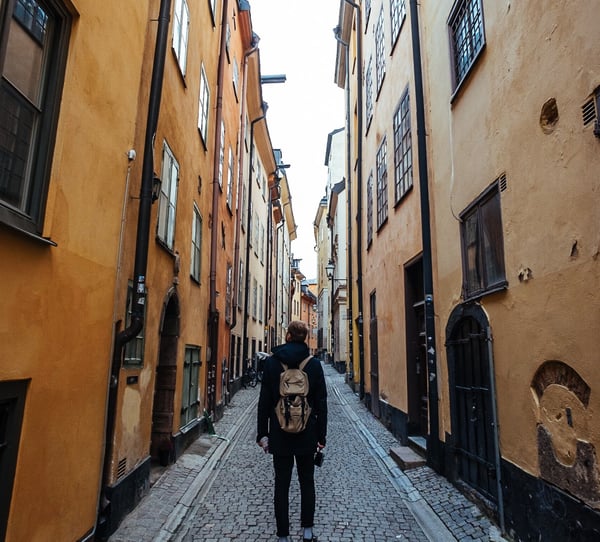
We also give people freedom to work when they want to work, as we all have different body clocks and personal situations to manage. I’m an early bird, so up early walk the dog and then get into some work. I typically clock off for a short working lunch, then a cup of tea around 4PM (well, I am - or was British …until Brexit) then I’ll clock back on and work during the evening. I’ll probably average 50 – 60 hours a week, but because of the way we work and the environment, it’s certainly not like a typical job or typical work. The point is it’s really up to you how much you want to work.
I often find I need a creative environment to get the juices flowing, so I’ll head to a museum, exhibition, interesting bit of architecture or just a cafe and generally this works best for me. I’m also lucky because I work just as well from an airport, on a train or in a hotel as I do anywhere. And the great thing about Stockholm is everywhere is online, with great wifi and great cafes. Perfect.
So here’s a really big point about the benefit of working this way. I am far more productive than most people. I don’t need to waste time sitting in a car or on public transport just because I have to go to an office. I once calculated, before we started UP, that I used to spend over 14 days a year simply commuting to and from an office. I’d much sooner spend that 14 days on holiday. I’d also sooner save all that fuel and CO2 emissions.
For places, cities and municipalities, this is a real opportunity. There is huge potential in attracting this new creative class of digital nomads, or E-ployees. As a group, we tend to be pretty well paid and that makes us great contributors to a local economy. This is a major shift. The creative class bring wealth with them. But what do these creative individuals look for? We’ll explore that more in a future blog, but for now, let’s focus again on Stockholm.
Stockholm. The Capital of Scandinavia*
I was also fortunate enough to work on the marketing and branding of my home city a few years back. After much research and several workshop groups, we came to the conclusion that Stockholm was the most important place in Scandinavia for business and for tourism. As that wasn’t terribly sexy, we created a shorthand for this idea creatively by dubbing Stockholm The Capital of Scandinavia. This brought the normally passive Scandinavians to the point of falling out, and The Danes and Norwegians more than got the hump. However over sixteen years later the idea is still central to Stockholm’s brand and positioning, and has been an enormous success. If you want to read the book on the branding of Stockholm go to the link at the bottom of this blog for WISH YOU WERE HERE, which I wrote a few years back, all about the work we did for Stockholm.
But anyway, what makes a great city - or even the perfect city?
There is an equation for the perfect city. So says Luis Bettencourt and Geoffrey West of the Santa Fe Institute.
Having amassed vast reams of big data (the length of electric cables, average income to the length of roads, the number of petrol stations and so forth), they came to the following conclusion: as these quantities increase, so does the city size.
So far, so obvious. But what was really interesting was this: the way in which cities grow around the world and indeed through the ages is mathematically predictable. By using Kleiber’s law as a point of departure (which states that metabolic rate is related to an organism’s size) Bettencourt came to realise the pattern holds good not only for all organisms and plants but also for that uniquely man-made construction, the city.
To put it another way, cities always obey scaling laws and they do so in a super linear fashion. As Bettencourt puts it, “when you double the size of the city, you get more than double the amount of both good and bad socio-economic quantities—patents, aids cases, wages, crime.” He takes the view that, whichever metaphor you pick, (an ant colony, a super organism, a machine, cities are first and foremost) cities are ‘agglomerations of connections between people.” In short, cities are born of connection.

Bettencourt and West took the data and turned them into a few elegant equations, which describe how a city grows, has grown and will grow. Such is his faith in the mathematics and the laws on which they are based that Bettencourt claims that if you tell him the size of any city in the US, he can tell you everything about it. Because it will obey scaling law-without exception. He quite rightly says that urban planners, architects and politicians need to be aware of this.
However, for my part I find his faith in mathematics troubling. His equations are no doubt faultless, his logic unquestionable, but to conceive of a city in solely mathematical terms strikes me as misguided. You can analyse the Mona Lisa in terms of the Golden section, you can look at it through a microscope, you can run every test known to science but doing so would bring you no closer to its essence. So it is with cities.
Which brings us to Stockholm. Perhaps I’m biased because I’ve made Sweden my home for over twenty years, but I think Stockholm is one of the greatest cities in the world.
But how does it measure up for the digital nomad or e-ployee?
Let’s start with its good points, of which there are many.
- Leader in innovation and entrepreneurism. Stockholm is one of one Europe’s, nay the world’s leading innovation and entrepreneurial capitals. At the time of writing, there are over 700 start-ups in Stockholm. Outside of Silicon Valley it has more Unicorns (privately held start-ups valued at a billion dollars or more) per capita, than any other place on earth.
- GDP stands at $538 billion 2018, which is pretty good. All the indications are it will top this in 2019 and 2020. This figure represents 0.89 of the world’s economy that, given its population of ten million or so, is doubly impressive. Sweden is blessed with a high standard of living. Yes, money helps, but life is good in Sweden in large part because the Swedes have got the work / life balance right – a very strong motivator for digital nomads.
- Happy people. The World Happiness report, which is published by the UN, declared Sweden the 7th happiest country in the world. The rankings are based on answers to the main life evaluation question asked in the poll. This is called the Cantril ladder: it asks respondents to think of a ladder, with the best possible life for them being a 10, and the worst possible life being a 0.
- Well connected. Wi-fi is super fast and for the most part free. Indeed, Sweden boasts some of the fastest broadband in the world. The 3rd fastest according to Akamai’s 2017 state of the internet report (Akamai Report) The average is an impressive 20.6 Mbps across the country. The reason? Sweden wisely invested in fiber optics nearly twenty years ago. To put this into context, South Korea leads the charge with an average connection speed of 28.6 and Paraguay gets the wooden spoon in 148th position with a snail-like 1.4.
- Digital savvy. It won’t come as surprise then that Stockholm is digital nomad savvy in a big way. Take hotels and cafés, for example, both of which have long realised that people are increasingly doing business on the move, and so they have gone to great lengths to make the digital nomad feel welcome. Which is why hotels and cafés are full of new age workers doing business. Add to this the fact there are co-working places galore and Stockholm adds up to a formidable digital proposition.
- Sweden is ultra-modern. So, too, is its capital. Sweden embraces tech as to the manner born. For instance, for good or for ill, the Swedes have practically gotten rid of cash (I can’t remember the last time I actually needed cash). Even the homeless (and we have a few mostly from other EU countries such as Romania) accept donations via a smartphone app called Izettle or Swish.
- Tolerant. Sweden has a famously tolerant society – an important criterion for many E-ployees. The Good Country Index, which calculates what each country contributes to the common good, puts Sweden in fourth place, ahead of Germany, Switzerland and the UK.
- Low corruption. Clearly the Swedes are doing something right. Corruption is also very low compared to all other countries on earth, and red tape is pretty minimal – provided you have a personnummer (a personal number). Every Swede gets one the minute they are born and it’s pretty difficult to do anything without one if you intend to live in Sweden.
- Safe with low crime. Stockholm is safe, crime is low, the lifestyle relaxed. Stockholmers are as a rule calm, polite and welcoming. Indeed, Stockholm is one of the safest cities in the world, despite a rise in crime over the past few years. According to the 2019 Safe city index, (which ranks 60 cities against 57 criteria covering digital security, health security, infrastructure security and personal security) it is the sixth safest city on earth in terms of personal security. The first? Singapore.
- Excellent public transport. Pubic transport is excellent and relatively cheap, which is good news for digital nomads who have shallow pockets. The Tunnelbana, or subway, is punctual, the stations well connected and everything runs as smoothly as you would expect in Scandinavia. Oh, and the air quality is one of the best in Europe, which also helps Swedes to be one of the healthiest races on earth.
- Great culture. And those who think it might be light on high culture can think again. It boasts over 80 museums and art galleries. What of the nightlife? It is rated as ‘’good” on the Nomad list
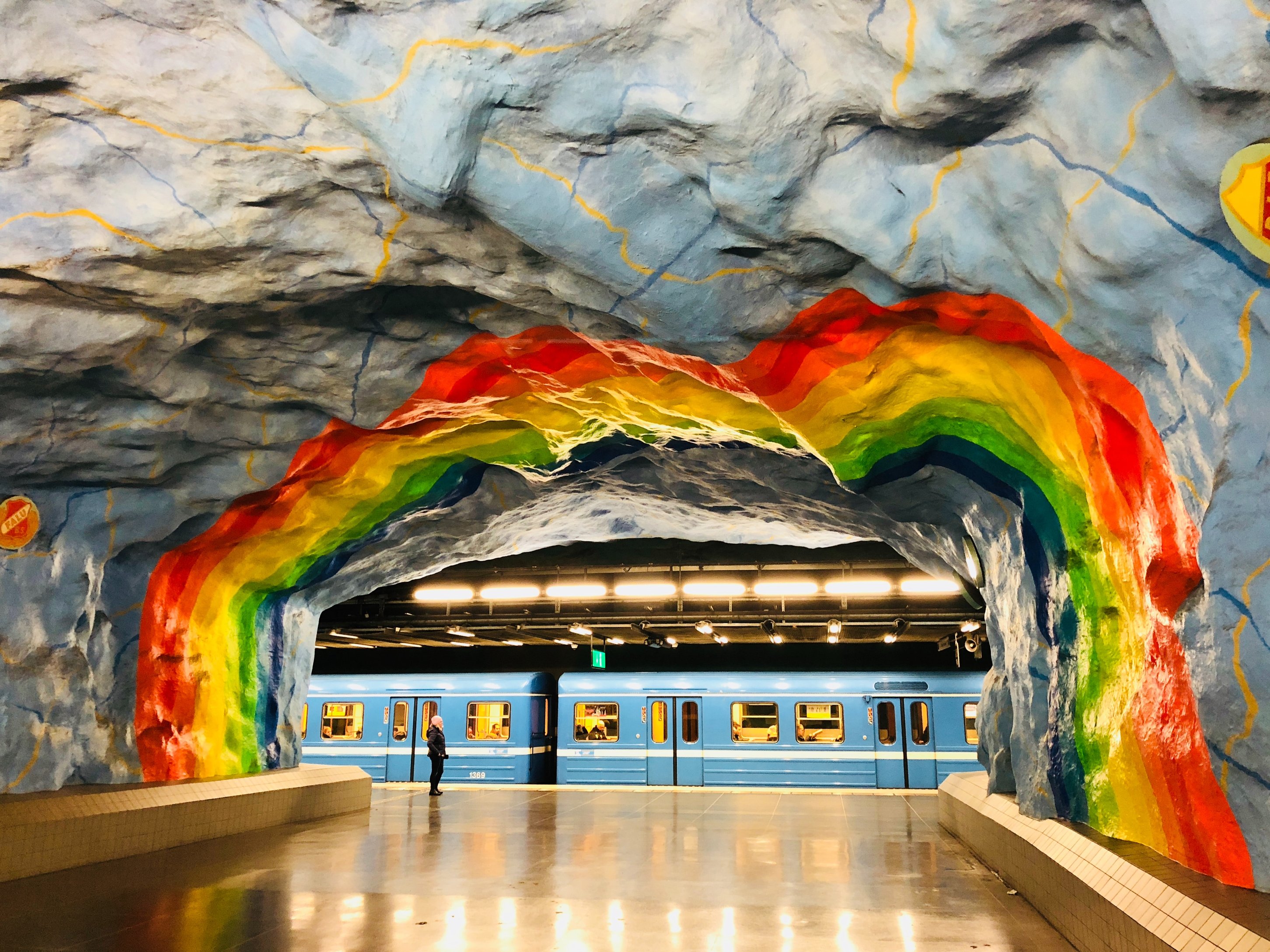
However, Stockholm is inevitably not without its disadvantages. For starters, some things can cost more than in many other European cities.
Alcohol is a good case in point. Sweden has a nationalised chain of off-licenses called the Systembolaget. Save for bars and restaurants, it’s the only place where one can buy booze stronger that 3.5%. And by British and American standards, it’s a bit pricey. Some bars and restaurants are even more so. But as one Swede recently told me when talking about the price of drink ‘Ah could be far worse, we could be in Oslo where it’s really expensive to get ratted!’ (just goes to show the Swedes capability at English, being able to use such an English colloquialism).
On the daylight front, there is either too much light or too little. Winters are cold. Swedes are also a shy bunch and it can be a bit more difficult to make friends, according to some. Best advice: get a few drinks inside them and they lighten up pretty quickly.
So on balance the pros more than outweigh the cons. If you get a chance to visit Stockholm, do check it out.
So getting back to our topic of digital nomads vs. remote workers vs e-ployees, what exactly is it?
What is e-ployment®?
It's not employment. It's not freelancing. It's something else.
e-ployment is new way of working in the cloud that uses the advantages offered by modern digital technology combined with a growing entrepreneurial spirit around the world. It combines the benefits of self-employment with the advantages of working as part of a team in a real company. You get the best of both worlds, as the saying goes. More on E-ployment below.
Join us: e-ployment Conference & Breakfast Meeting
We have received numerous requests to talk more about E-ployment, and so in 2020 we will be holding two special e-ployment events.
- The first will be a breakfast meeting which will be held on Friday March 20th at a venue in Stockholm. This will kick off at 7.30 in the morning and run for a total of 2 hours. Reserve your place on the list now:

- The second event will be held later in the year, during the autumn, and will be a day and a half long conference focusing on the topic of e-ployment and again this will take place in Stockholm. More news on this in the near future.
Get the book
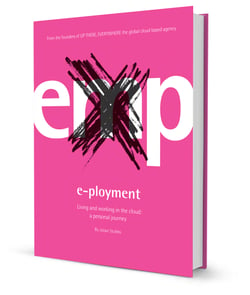 E-PLOYMENT; LIVING & WORKING IN THE CLOUD. The book on how e-ployment was developed as a new way of working. Click the link to buy on Amazon now:
E-PLOYMENT; LIVING & WORKING IN THE CLOUD. The book on how e-ployment was developed as a new way of working. Click the link to buy on Amazon now:
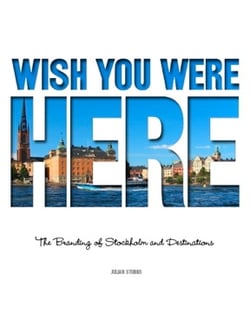
WISH YOU WERE HERE; The branding & marketing of Stockholm and Destinations. The book about the branding work for Stockholm. Click this link to buy the book on Amazon.
Read more (sources):



